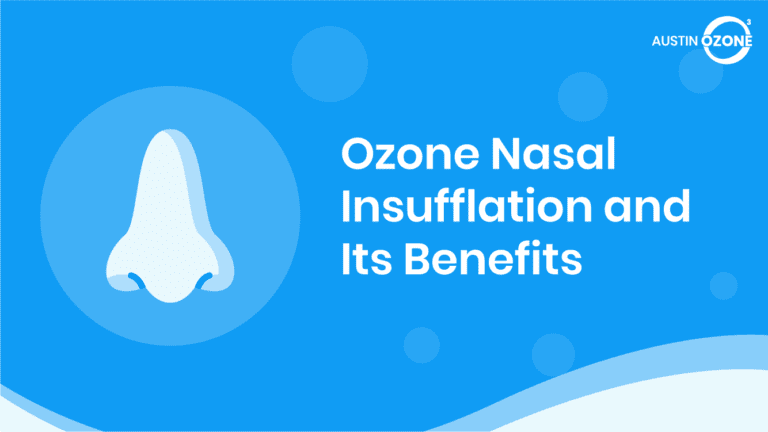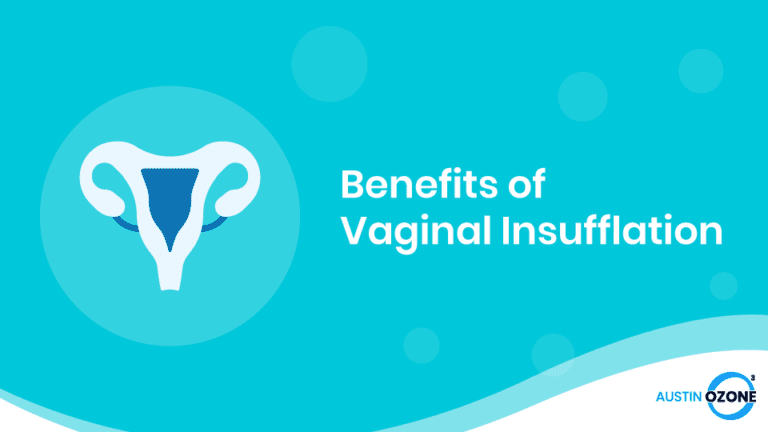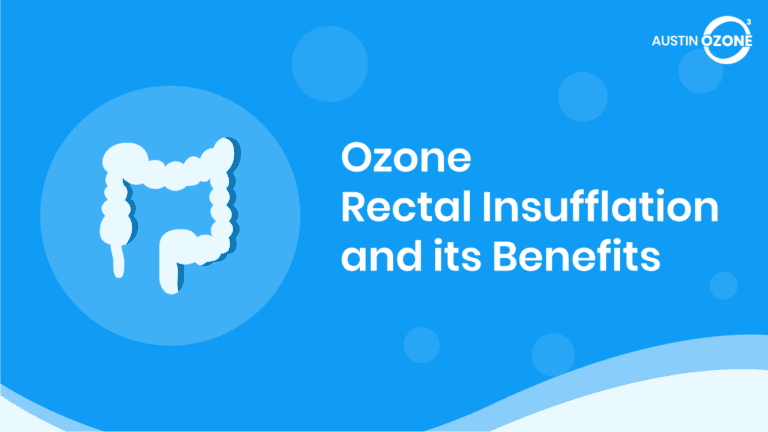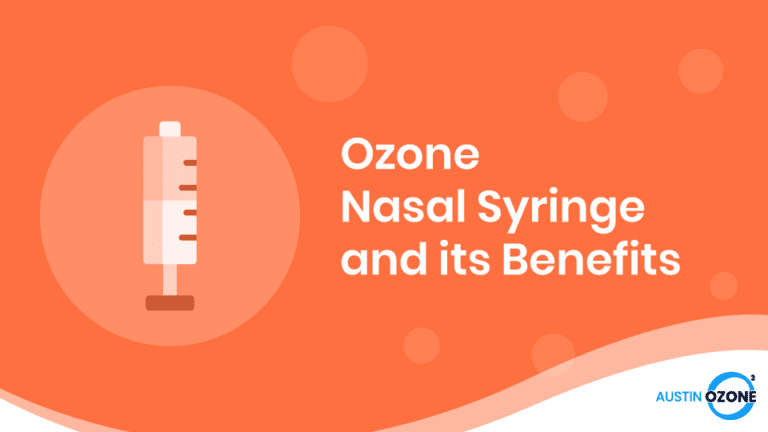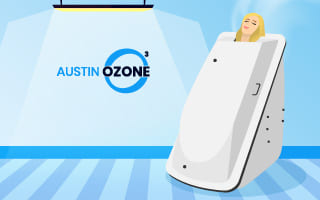The Efficacy of Ozone Therapy
Ozone6 is a colorless, unstable gas composed of molecules made of three atoms of oxygen that are chemically bonded with each other.
Because of its positive charge, ozone has been proven effective in neutralizing or oxidizing negatively charged microorganisms such as yeast, fungi, bacteria, viruses, and protozoa. For this reason, healthcare providers are using ozone therapy to treat patients who are suffering from various medical conditions.
The efficacy of ozone therapy7 wholly depends on its dosage or concentration and administration. A low ozone dosage may not yield the desired therapeutic results while high concentrations may lead to overdosing and are thus, toxic.
The proper dosage should be able to stimulate or modulate the body’s natural regenerative and immune systems as well as activate oxidation within the cell.
Modes of Therapeutic Significance
Regenerative
Medical ozone’s therapeutic significance can be classified into six categories8:
The Intramuscular administration of medical ozone through direct injection to the affected tissue stimulates the cytokine oxidase found within the cell mitochondria. This activates cell synthesis, which helps produce newer and healthier tissues and improves the body’s ability to heal itself.
Disinfecting
Some of the main features of medical ozone are its disinfecting properties9 and its ability to attack pathogenic organisms. Its oxidative nature makes it capable of destroying the harmful microorganisms’ cell walls and of activating the signaling pathways of the body’s cells in response to a microbial attack.
Adjunctive
Ozone therapy can act as a support and palliative treatment for many serious health and medical conditions like cancer, cardiovascular diseases, sexually transmitted diseases, and autoimmune disorders. Although ozone therapy cannot cure these conditions directly, it can offer a safer and less toxic way to treat their symptoms.
Detoxifying
Toxins can be found almost anywhere – from the food you eat to the air that you breathe in. Under normal circumstances, toxic wastes are eliminated from your body through your liver and kidneys with the help of your lymphatic system.
However, these systems can get clogged because of an unhealthy lifestyle and cumulative stress. When this happens, toxic wastes can end up circulating in your bloodstream with no way out.
Ozone therapy helps flush out the toxins by increasing the amount of oxygen circulating in the blood. This causes your excretory system to unclog and removes the toxins from your body.
Anti-inflammatory
Oxidative stress within the cell can produce free radicals and trigger an inflammatory response. Ozone therapy helps combat this by improving the body’s production and activation of antioxidants that capture the free radicals; thus, protecting the cells from oxidative stress.
Blood Oxygenation
Methods for Administering Ozone Therapy
Although ozone therapy9 has been around since the late 18th century2, scientists and researchers are continuously doing further studies and clinical trials to prove its efficacy.
This led to the discovery that medical ozone can be administered to the human body in various ways. The correct method of administration depends on the patient’s overall health and medical condition.
At present, there are nine methods of ozone therapy that are currently used.
Intra-arterial or Intravenous
This method previously involved the direct injection of the medical ozone/oxygen mixture into a vein or an artery with the use of a hypodermic syringe.
However, because of the unwanted effects brought about by the rapid introduction of ozone into the body’s circulation, modern practice dictates a safer method . Around 100mL of blood is first drawn out and mixed with 100mL of medical ozone gas in a sterile vacuum flask. The ozonated blood is then fed back to the same vein through an IV.
Intramuscular Injection
Mostly used as an adjunctive treatment to cancer therapies, this method involves injecting a small amount of the medical ozone/oxygen mixture directly into the patient (usually, through the buttocks).
Autohemotherapy
This procedure combines the intravenous and intramuscular methods. A specified amount of blood is drawn out and bubbled with the ozone/oxygen mixture before being fed back either through intramuscular injection or through an IV (the right option depends on how much blood was drawn out).
This method is considered the most used in ozone therapy to date.
Ozonated Water
Usually used as a disinfectant by dentists, this method requires ozone to be dissolved in water to produce a powerful biocide that can destroy all types of viruses and bacteria.
Ozonated Oil
Used primarily as an ointment or cream to treat skin problems, this method is almost the same as ozonated water, except it uses vegetable oil (i.e. olive oil) as a carrier.
Ozone Bagging
This method involves placing a specialized bag around the infected area, then pumping the ozone/oxygen mixture into the bag and letting the skin absorb it. This method is often used to help prevent the infection of wounds or post-surgical incision sites.
Rectal / Vaginal Insufflation
Developed in the 1930s, rectal/vaginal insufflation is a process where the medical ozone/oxygen mixture is introduced into the body through the rectum or the vagina with the use of a catheter.
The ozone/oxygen mixture is then absorbed by the large intestine and circulated through the bloodstream. Although the procedure sounds highly uncomfortable, rectal and vaginal insufflations are considered the safest ozone therapy methods for treating a variety of health problems.
Ozone Ear Insufflation
This method is mainly used to treat ear infections4. The medical ozone is pumped through the ear canal using a special type of catheter.
Ozone Nasal Insufflation
It may seem counterintuitive as the respiratory organs are sensitive to ozone1. However, Ozone nasal insufflation provides a safe method of inhaling ozone by filtering it first through olive oil6. The ozone vapors are then inhaled using a device like the nasal cannula.
Schedule a Nasal Insufflation Session Today
Ozone Nasal Insufflation Benefits
Directly inhaling ozone (medical or not) is detrimental to your health. This is because ozone is a known air pollutant and can therefore irritate the lungs. Nasal insufflation3 provides a way to prevent that scenario through the indirect inhalation method.
A tank of pure oxygen is hooked up to an ozone generator to produce the medical ozone/oxygen mixture. The gas mixture is then bubbled through olive oil to create ozonide, an unstable compound that carries the therapeutic benefits of ozone without the undesirable effects.
Breathing ozonide can help treat a wide range of respiratory disorders such as allergies, asthma, bronchitis, and congested sinuses.
The ozonide is then inhaled through the nostrils using a nasal cannula5. Breathing ozonide can help treat a wide range of respiratory disorders10 such as allergies, asthma, bronchitis, and congested sinuses.
Some ozone nasal insufflation health benefits10 include immediate relief from asthma and other upper respiratory tract infections, immediate relief from sinusitis (chronic and acute), and decreased inflammation of the nasal passageways.
Introduction Video About Ozone Nose Insufflation
What Are the Risks of Ozone Nasal Insufflation?
Accidental inhalation of medical ozone can cause irritation and inflammation of the nasal mucosa (nasal cavity), the area responsible for triggering a response against inhaled allergens and other infectious particles.
Although ozone nasal insufflation uses olive oil as a filter, it is still possible for the accidental inhalation of ozone to occur. For example, if the oil becomes too saturated with ozone gas, it will stop producing ozonide. Instead, you will be left breathing raw ozone unintentionally.
The only way to prevent this from happening is to ensure that you use enough oil during the procedure and to change oil frequently to avoid ozone saturation. For this reason, it is far safer to do nasal insufflation in certified clinics or hospitals where a professional can assist you.
Some people opt for a do-it-yourself nasal insufflation that uses an ordinary syringe filled with a small amount of ozone. They pump it directly into their nostrils. Again, though, this method has risks as it can trigger an allergic reaction.
Also, people who have transplanted organs, heart conditions, and/or are pregnant are advised not to follow through with the procedure, as it may cause adverse effects on their health.
Conclusion
Ozone therapy through nasal insufflation has proven to be effective in treating patients with throat, sinus, and upper respiratory infections.
Ozone therapy through nasal insufflation has proven to be effective in treating patients with throat, sinus, and upper respiratory infections. Although straight inhalation of medical ozone is risky, nasal insufflation provides a safe method of ozone administration.
Breathing ozonide can provide immediate relief to many respiratory conditions and protect your respiratory system from allergens and other harmful particulates.
Before booking yourself for an ozone therapy session, remember to consult with your physician to find out which method of ozone administration is best for your medical condition.
Schedule an Appointment Today
References
- Bromberg, P. A. (2016). Mechanisms of the acute effects of inhaled ozone in humans. Biochimica et Biophysica Acta (BBA) – General Subjects, 1860(12), 2771-2781.
- Dardes, N., Covi, V. & Tabaracci, G. (2017). Ozone therapy as a complementary treatment in cardiovascular diseases. Integrative Cardiology , pp. 165-172.
- Dziwetzki, P. (2020, June 15). How to do nasal insufflations with ozone. Retrieved from https://thepowerofozone.com/how-to-guides/how-to-do-nasal-insufflations-with-ozone/
- Greiner Health Solutions. (n.d.). Ozone insufflation therapy. Retrieved from https://greinerhealthsolutions.com/services/ozone-insufflation-therapy.html
- Longevity Effect. (n.d.). Nasal insufflation | longevity effect. Retrieved from https://longevityeffect.com/tulsa-wellness-services/nasal-insufflation/
- Merhi, Z., Bazzi, A., Moseley-LaRue, R., Mosely, A. R., Smith, A. H., Zhang, J. & Ruggiero, M. (2018). Ozone Therapy: Overview of its potential utility in male. American Journal of Immunology, 14(1), 15-25. https://doi.org/10.3844/ajisp.2018.15.25
- New Bridge Wellness. (n.d.). Ozone therapy. Retrieved from https://newbridgewellness.com/services/ozone-therapy
- Ranaldi, G. T., Villani, E. R., & Franza, L. (n.d.). Ozonetherapy: A multirole weapon, topical pathway role against SARS-COV-2. Retrieved from https://clinalgia.com/Ozone%20therapy%20a%20multirole%20weapon.pdf
- Silva, V., Peirone, C., Amaral, J. S., Capita, R., Alonso-Calleja, C., Marques-Magallanes, J. A., Martins, A., Carvalho, A., Maltez, L., Pereira, E., Capelo, J. L., Igrejas, G., & Poeta, P. (2020). High efficacy of ozonated oils on the removal of biofilms produced by methicillin-resistant staphylococcus aureus (MRSA) from infected diabetic foot ulcers. Molecules, 25(16), 3601. doi: 10.3390/molecules25163601
- Washatka, S. (n.d.). Nasal Insufflation. Retrieved from http://thedrsarah.com/nasal-insufflation/
